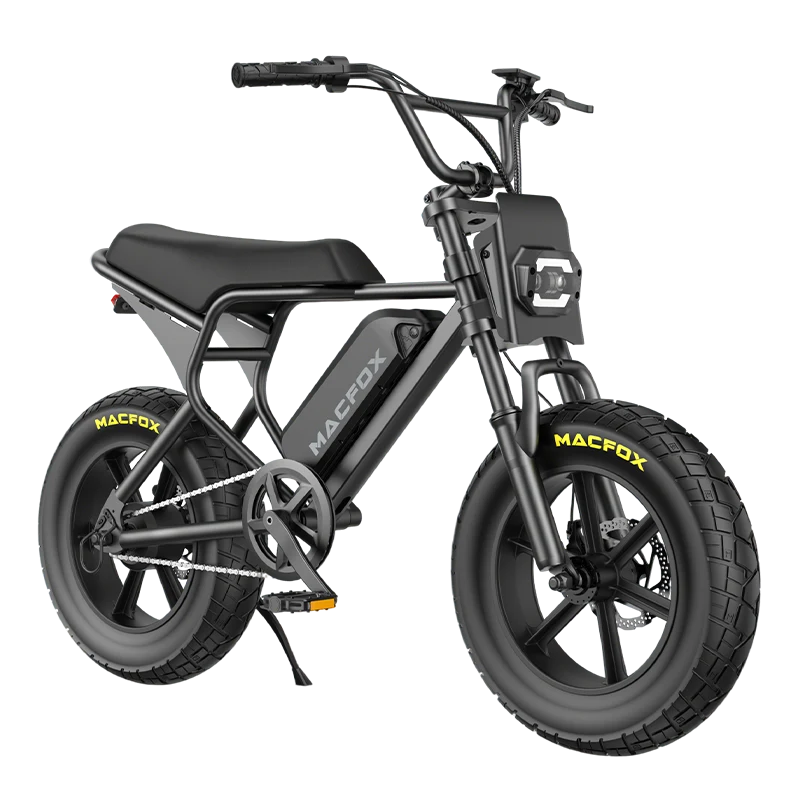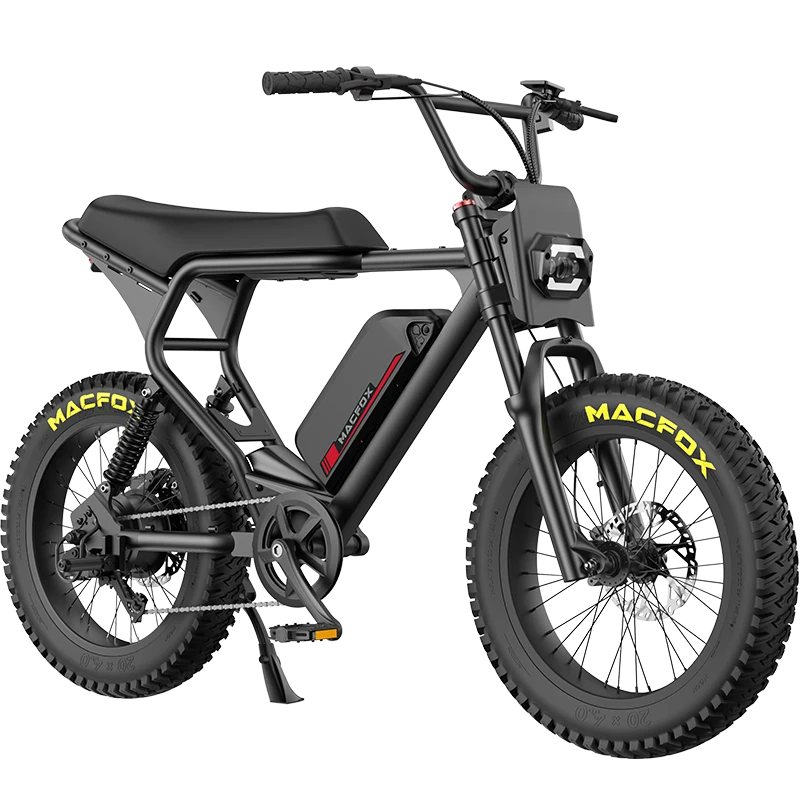In the realm of electric bicycles, a swiftly evolving domain, a diverse array of models continuously emerges to cater to the multifaceted demands of consumers. Within this landscape, two categories of electric bicycles have garnered substantial acclaim: pedal-less electric bikes (throttle-driven) and pedal-equipped electric bikes (pedal-assist). While both categories offer the convenience and efficiency of electric-powered transportation, they diverge fundamentally in their operation and user experience. Comprehending these distinctions is imperative for consumers as they navigate the process of selecting the most suitable electric bicycle, aligning it with their individual requirements, lifestyle, and preferences. This comprehensive juxtaposition endeavors to elucidate the unique attributes and benefits of each category, thereby assisting potential purchasers in making an informed choice regarding their electric bicycle acquisition.
Electric Bikes Without Pedals: Emphasizing Simplicity and Ease

Pedal-less electric bikes, commonly referred to as throttle bikes, are meticulously crafted to prioritize simplicity and effortless operation. Their functionality closely resembles that of motorcycles or scooters, enabling the rider to manipulate the bike's motion and velocity through a throttle mechanism, without the need for pedaling exertion. This design renders them an exceptional choice for individuals who favor a leisurely riding experience, devoid of the physical demands associated with pedaling. They are particularly advantageous for individuals with mobility constraints or those in pursuit of a convenient mode of conveyance for short distances.
Key Features:
User-Friendly Interface: Throttle bikes boast an exceedingly user-friendly interface, demanding minimal effort from the operator. This attribute renders them a favored choice for casual riders and neophytes venturing into the realm of electric bicycles.
Enhanced Accessibility: The design of throttle bikes proves especially accommodating for individuals with physical limitations, who may encounter challenges in pedaling or find it strenuous.
Precise Velocity Management: The throttle mechanism affords precise control over the bike's speed, facilitating an uncomplicated and comfortable journey.
Electric Bikes with Pedals: Blending Fitness with Functionality
In stark contrast, pedal-equipped e-bikes (often referred to as pedal-assist bikes) integrate a more physically engaging riding experience. They require the rider to actively pedal to trigger the motor, which then provides assistance based on how hard the rider pedals. This design not only simplifies riding movements, especially when climbing slopes or riding long distances, but also ensures that the rider remains physically engaged. Pedal-assist bikes are great for those who enjoy a traditional riding experience while enjoying the added convenience of motorized support.
Key Features:
Augmented Physical Activity: These bikes incentivize physical engagement, positioning them as a healthier alternative in comparison to throttle bikes. Regular pedaling contributes to improved cardiovascular health and augments muscular robustness.
Energy Conservation: The pedal-assist mechanism optimizes battery utilization, resulting in a more resource-efficient and eco-conscious ride.
Versatility: Suited to an extensive spectrum of applications, ranging from daily commutes to recreational excursions, pedal-assist bikes demonstrate adaptability across diverse terrains and protracted journeys.
Comparative Analysis: Performance, Efficiency, and User Experience
The performance, efficiency, and user experience diverge markedly between these two classifications of electric bicycles, each adept at catering to discrete user predilections and requisites. Pedal-assist bikes, with their harmonious interplay between pedaling and motorized assistance, typically offer a smoother and more equilibrium-based journey. This begets an instinctive and pleasurable cycling experience, setting them apart from throttle bikes, which may not engage the rider as extensively.
Performance: Pedal-assist bikes are predisposed to deliver a more seamless and balanced riding experience, courtesy of the synergy between pedaling efforts and motorized support. This fosters a more intuitive and gratifying cycling experience in contrast to throttle bikes, which may not engender a comparable degree of rider engagement.
Efficiency: Pedal-assist bikes generally boast superior energy efficiency when juxtaposed with throttle bikes. The motor remains active solely in response to the rider's pedaling, thereby conserving battery life and extending the range for protracted excursions. Conversely, throttle bikes may exhibit higher power consumption, potentially limiting their travel distance.
User Experience: The choice between a throttle bike and a pedal-assist bike hinges on the rider's inclinations. Those who seek an unhurried and effortless journey, bereft of the necessity to pedal, may find themselves drawn to throttle bikes. Conversely, cyclists who derive satisfaction from pedaling but appreciate intermittent bursts of power will gravitate towards pedal-assist bikes. This differentiation proves pivotal in determining the electric bicycle that harmonizes optimally with an individual's lifestyle, physical capabilities, and personal predilections.
Related Reading: Signs It's Time to Replace Your E-Bike Tires
The Advantages of Pedal Electric Bicycles
Pedal-driven electric bicycles proffer a distinctive amalgamation of advantages, rendering them a favored choice across a wide spectrum of users. They meld the health benefits intrinsic to traditional cycling with the convenience and efficacy of electric motor support. This amalgamation holds particular appeal in today's health-conscious society, where individuals increasingly seek to incorporate physical activity into their daily routines while concurrently pursuing efficient and eco-conscious modes of transportation.
Health Benefits: Consistent pedaling on a pedal-driven electric bicycle fosters cardiovascular health and muscle fortitude. Even in the presence of motorized assistance, riders partake in physical activity, rendering pedal-driven electric bicycles a healthier alternative vis-a-vis their throttle counterparts, which entail limited physical exertion.
Environmental Impact: Pedal-driven electric bicycles stand as paragons of energy efficiency, engendering minimal environmental pollution. Their capacity to traverse extended distances with minimal power consumption positions them as sustainable and conscientious options for environmentally-aware individuals.
Cost-Effectiveness: In the long term, pedal-driven electric bicycles frequently entail lower costs. Their judicious employment of power translates into elongated battery life and decreased occurrences of battery replacement and maintenance, culminating in substantial savings over time.
Rider Satisfaction: A significant number of users express heightened contentment with pedal-assist bikes. These bicycles confer a sense of accomplishment and enjoyment, stemming from active participation in the ride, an element that is oftentimes absent in throttle-driven bicycles. The equilibrium between physical exertion and motorized support begets a fulfilling experience, appealing to both ardent cyclists and occasional riders alike.
Choosing the Right Electric Bike: Factors to Consider

The process of choosing between a pedalless electric bike and a pedaled electric bike requires consideration of several key factors. These factors include the bike's primary use (commuting, leisure, exercise), the rider's physical fitness level, and personal tendencies related to engagement and ease of use. If leisure and simplicity are the main goals, a throttle bike may be a more suitable choice. In contrast, individuals looking to strike a balance between physical activity and convenience may gravitate toward pedal-assisted bicycles. Other considerations include the terrain the bike will travel, typical trip lengths, and any unique prerequisites related to the rider's physical condition or lifestyle.
For example, the X1 electric commuter bike launched by Macfox is an electric bicycle equipped with pedals. This electric bicycle can meet the needs of users for daily commuting, leisure, and exercise.
Conclusion
The evolution of electric bicycles transcends the realm of mere trend; it symbolizes a profound shift in the manner in which individuals approach cycling and transportation. Pedal-driven electric bicycles, in particular, stand at the forefront of this transformative movement. They proffer an eco-conscious, health-oriented, and gratifying cycling experience, encapsulating an exquisite fusion of traditional cycling values and contemporary technological progressions. These bicycles cater to an extensive spectrum of cycling requisites, encompassing daily commutes and recreational journeys, rendering them a versatile and enticing choice for a wide array of users.
Why Pedal Electric Bicycles are the Optimal Choice
Pedal-driven electric bicycles transcend their designation as mere conveyance devices; they epitomize a commitment to a healthier, more sustainable lifestyle. By opting for a pedal-assist bicycle, individuals not only invest in their personal well-being and enjoyment but also contribute to environmental conservation. The pedal-driven electric bicycle signifies modern, conscientious living, amalgamating the joy of cycling with the advantages of electric propulsion.
FAQs
What sets a pedal-driven electric bicycle apart from a traditional bicycle?
A pedal-driven electric bicycle is distinguished by the presence of a motor that extends assistance while pedaling, diminishing the exertion required, particularly when navigating challenging terrains or embarking on lengthy journeys. This feature differentiates it from conventional bicycles, which rely exclusively on the rider's physical effort.
In what manner does a pedal-driven electric bicycle promote a sustainable lifestyle?
Pedal-driven electric bicycles excel in energy efficiency and generate zero emissions during operation, rendering them an eco-friendly alternative to motorized vehicles. By conserving power and stimulating physical activity, they contribute to a sustainable and health-conscious way of life.
Can pedal-driven electric bicycles be employed in various weather conditions?
Indeed, pedal-driven electric bicycles are engineered to exhibit robustness and adaptability, rendering them suitable for diverse weather conditions. However, it remains imperative to administer appropriate maintenance and care, particularly in inclement weather, to ensure the bicycle's longevity and optimal performance. This encompasses proper storage, regular maintenance, and the utilization of weather-appropriate accessories to safeguard both the rider and the bicycle.


















